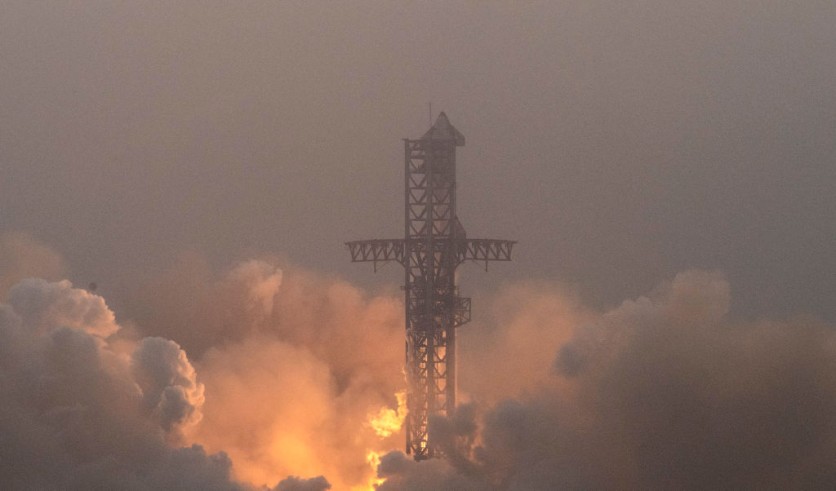SpaceX successfully conducted a doubleheader launch of two groups of Starlink internet satellites from the east and west coasts of the United States.
Space.com reported that a Falcon 9 rocket carrying 22 Starlink satellites launched from Cape Canaveral Space Force Station in Florida at 1:15 p.m. EDT (1715 GMT) on June 24. Later on, the second rocket, carrying 20 Starlinks, including 13 direct-to-cell, launched from Vandenberg Space Force Base in California at 11:47 p.m. EDT (8:47 p.m. local; 0347 GMT).
The spacecraft maker posted on X a video of the liftoff in California. Watch it below:
Watch Falcon 9 launch 20 @Starlink satellites to orbit from California, including 13 with Direct to Cell capabilities https://t.co/UYd5Afh3rU
— SpaceX (@SpaceX) June 24, 2024
Starlink provides high-speed internet access globally, especially for those living in remote areas, via its over 6,100 operating satellites in orbit.
According to ABC News, once the Falcon 9 rockets launched the satellites, they will go back to Earth, landing on a droneship in the Pacific Ocean.
SpaceX, NASA Team Up
The launch doubleheader comes as SpaceX and NASA gear up to blast off a Falcon Heavy rocket with the final GOES-R satellite, GOES-U. Teams monitored weather conditions for liftoff and rollout, delaying the rocket's deployment to Launch Complex 39A from Sunday morning.
The blastoff goal is on Tuesday, June 25, at 5:16 p.m. EDT (2116 UTC). The latest weather forecast, given on Sunday, June 23, predicts a 30% chance of favorable weather during liftoff on both the original launch day and the 24-hour backup window on June 26.

Starliner Undocking Delayed Again
In separate news, NASA and Boeing officials have extended the Starliner crew capsule's stay at the ISS again, postponing its June 26 re-entry. According to Spaceflight Now, this late Friday decision allows more time to analyze and evaluate mission-observed helium leaks and thruster malfunctions.
Before determining a new Starliner landing date, a formal re-entry readiness check will occur. An ongoing study may delay the capsule's undocking and return to Earth beyond the two scheduled spacewalks on June 28 and July 2.
However, Starliner captain Barry "Butch" Wilmore and co-pilot Sunita Williams can undock and return if urgent concerns emerge on the space station. Officials promise the crew is safe.
NASA Commercial Crew Program manager Steve Stich noted that they are adhering to NASA standard mission management protocols and their decision is based on collected data "on tiny helium system leaks and thruster performance concerns during rendezvous and docking."
Stich stressed the necessity for an agency-level evaluation, like NASA's SpaceX Demo-2 mission's 2020 return to Earth after a two-month orbital mission, to approve the Starliner mission.
Starliner engineers are fixing helium leaks and thruster abnormalities in the capsule's service module, which burns up in the Earth's atmosphere upon re-entry. Although actual hardware investigation after separation is impractical, NASA and Boeing are emphasizing comprehensive telemetry assessment, continuing testing, and contingency measures in case more concerns arise post-undocking.
Related Article : NASA is Launching a Solar Flare Early Warning System Promising Real-Time Space Weather Alerts


![Apple Watch Series 10 [GPS 42mm]](https://d.techtimes.com/en/full/453899/apple-watch-series-10-gps-42mm.jpg?w=184&h=103&f=9fb3c2ea2db928c663d1d2eadbcb3e52)


